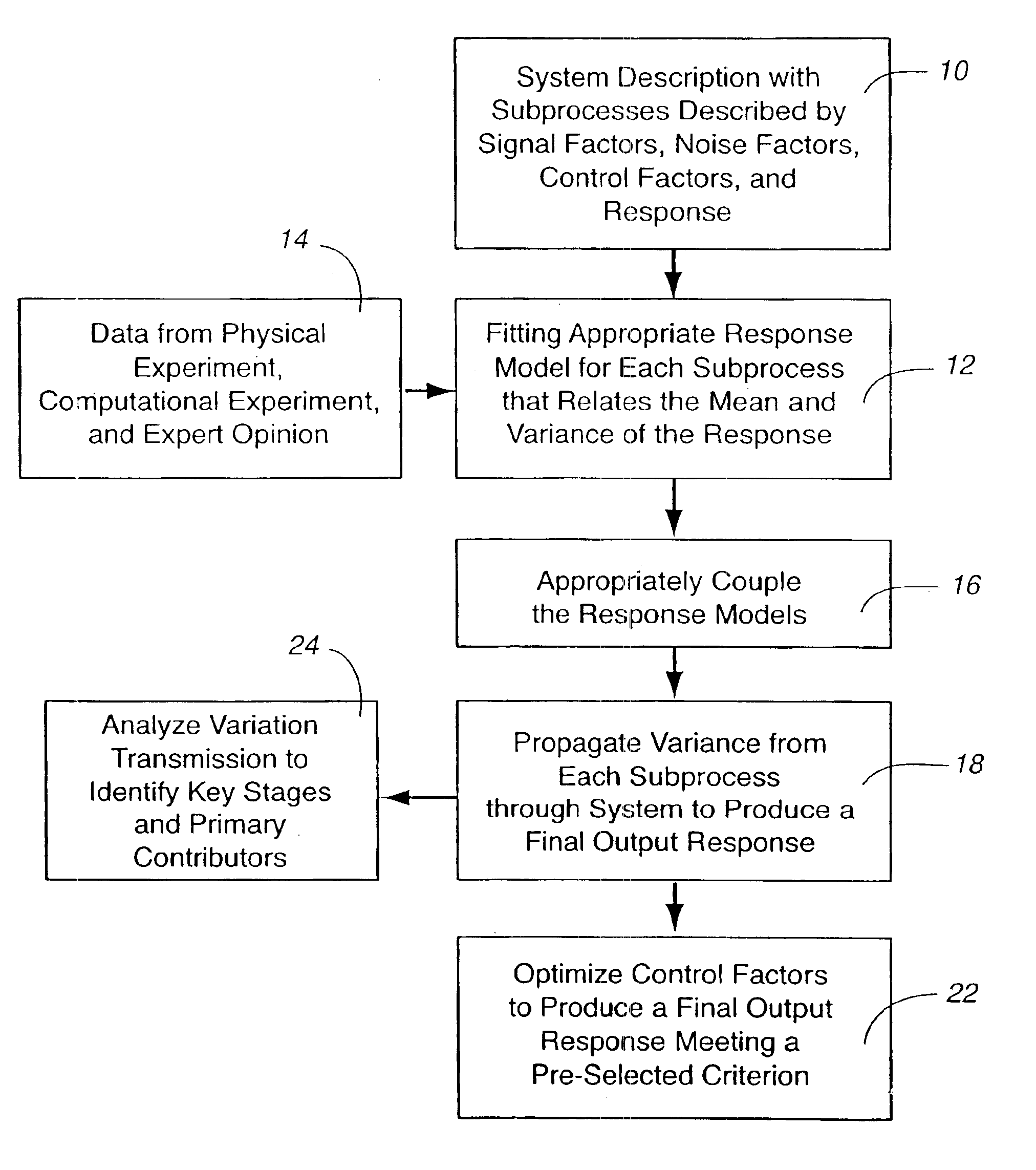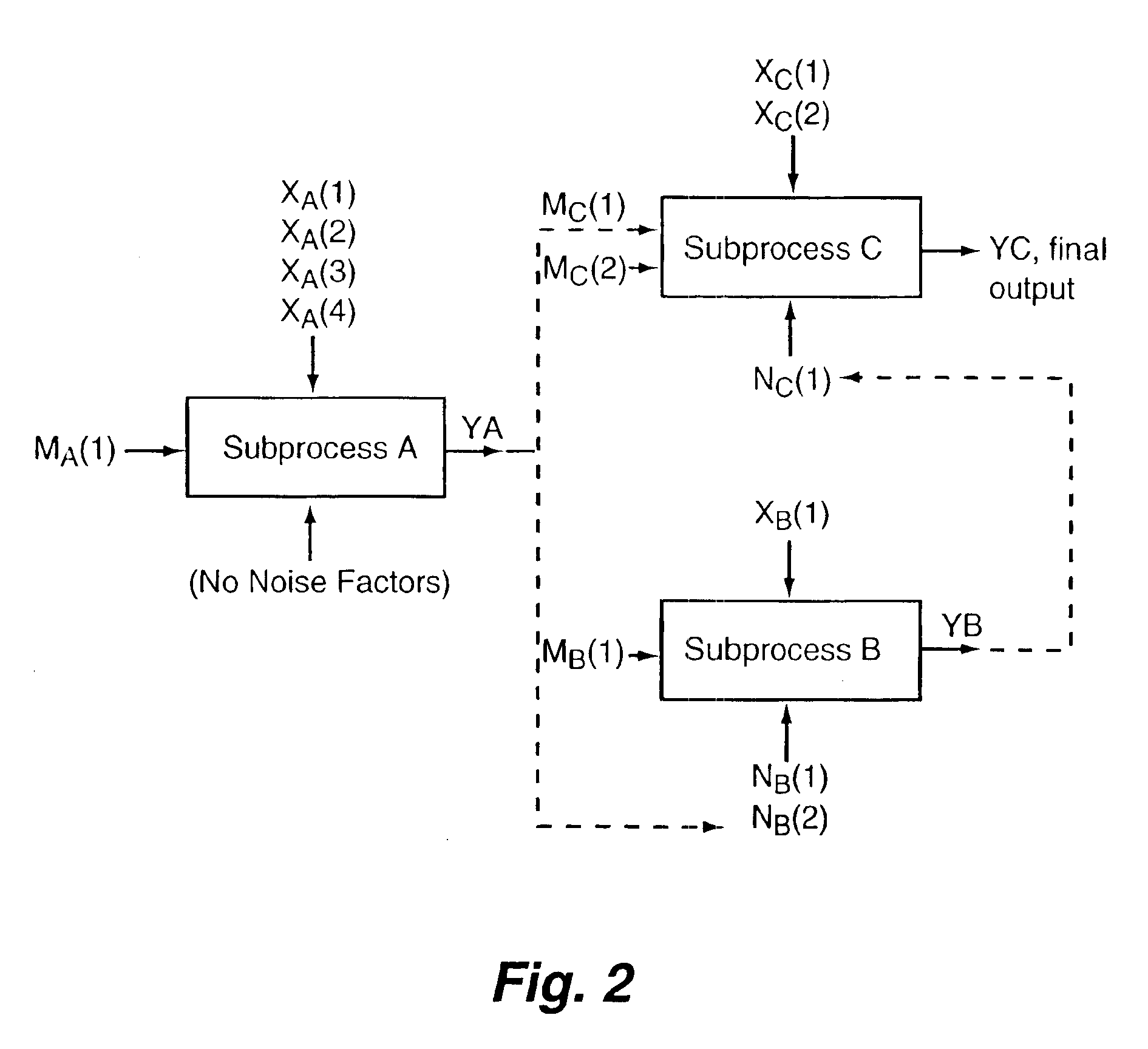System level analysis and control of manufacturing process variation
a manufacturing process and system level technology, applied in the field of optimization of the performance of manufacturing systems, can solve the problems of not ensuring the lowest end-of-line variation, affecting the performance of the manufacturing system,
- Summary
- Abstract
- Description
- Claims
- Application Information
AI Technical Summary
Problems solved by technology
Method used
Image
Examples
example problem
Results
[0094]Consider the results obtained by executing the code in Appendix 4 using input data obtained from the response models fitted in Step 1. In all cases, the results are based on 100,000 Monte Carlo replications (samples). Table 10 gives some summary sample moments and quantiles of the distribution of the responses yA, yAfixed, yB, yBfixed, yC, and yCfixed for the case in which all the unconstrained signal and control factors[0095]MA(1), XA(1), XA(2), XA(3), XA(4), MB(1), XB(1), Mc(2), Xc(1), and Xc(2) have been set equal to 1. Of primary interest is the final system response yC and yCfixed.
[0096]
TABLE 10Example Problem Results When All Unconstrained Signal andControl Factors Are Set Equal To 1.0ResponseMeanSDMCError2.5%5.0%Median95.0%97.5%YA141.525.40.0891.499.9141.4183.2191.7YAfixed141.624.30.0894.2101.7141.6181.7189.2YB11.72.70.0096.47.311.816.217.1YBfixed11.82.60.0086.67.411.816.016.9YC26.44.20.0118.419.626.333.434.8YCfixed26.44.10.0118.719.926.433.234.6
[0097]The distrib...
PUM
 Login to View More
Login to View More Abstract
Description
Claims
Application Information
 Login to View More
Login to View More - R&D
- Intellectual Property
- Life Sciences
- Materials
- Tech Scout
- Unparalleled Data Quality
- Higher Quality Content
- 60% Fewer Hallucinations
Browse by: Latest US Patents, China's latest patents, Technical Efficacy Thesaurus, Application Domain, Technology Topic, Popular Technical Reports.
© 2025 PatSnap. All rights reserved.Legal|Privacy policy|Modern Slavery Act Transparency Statement|Sitemap|About US| Contact US: help@patsnap.com



